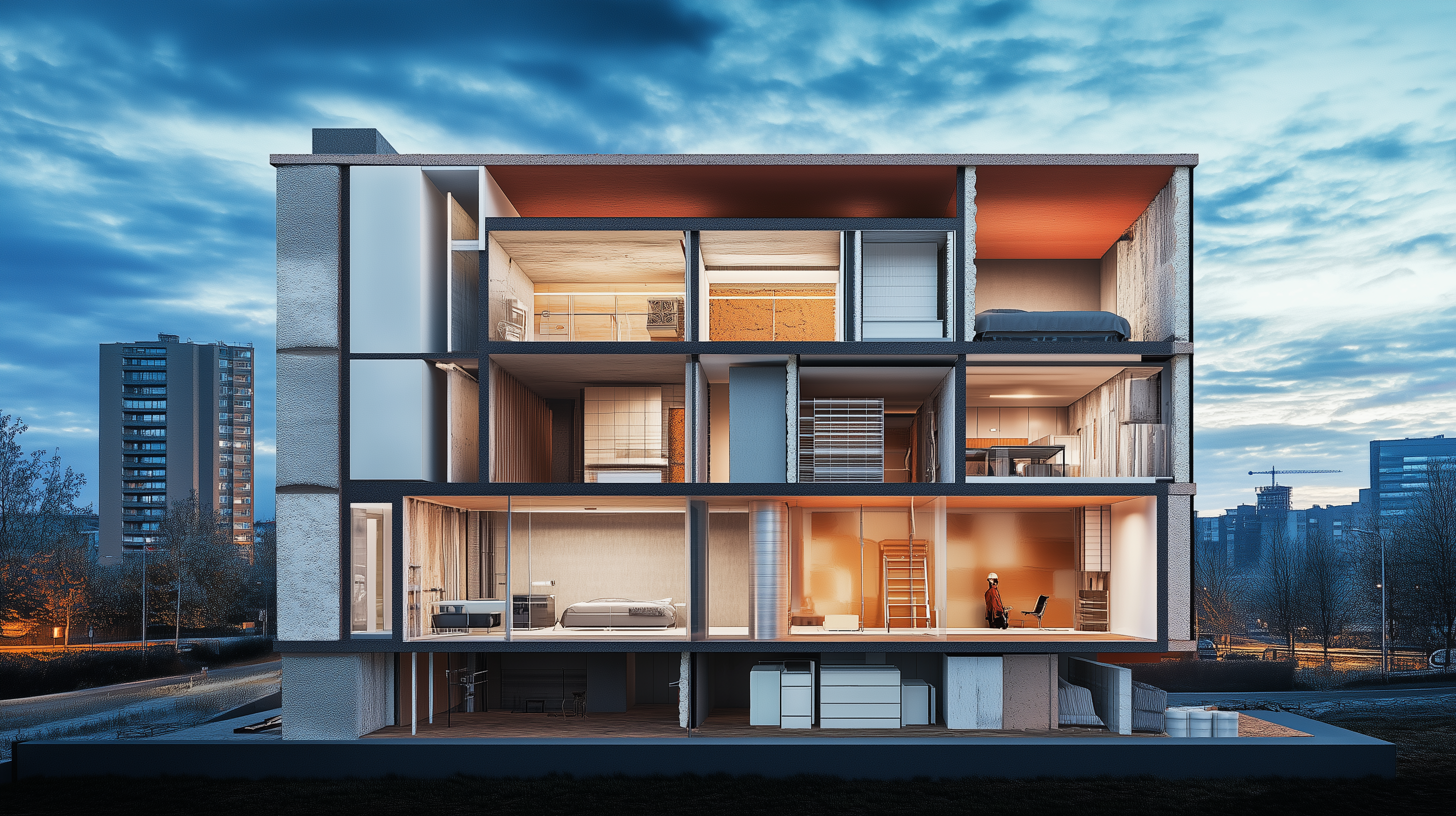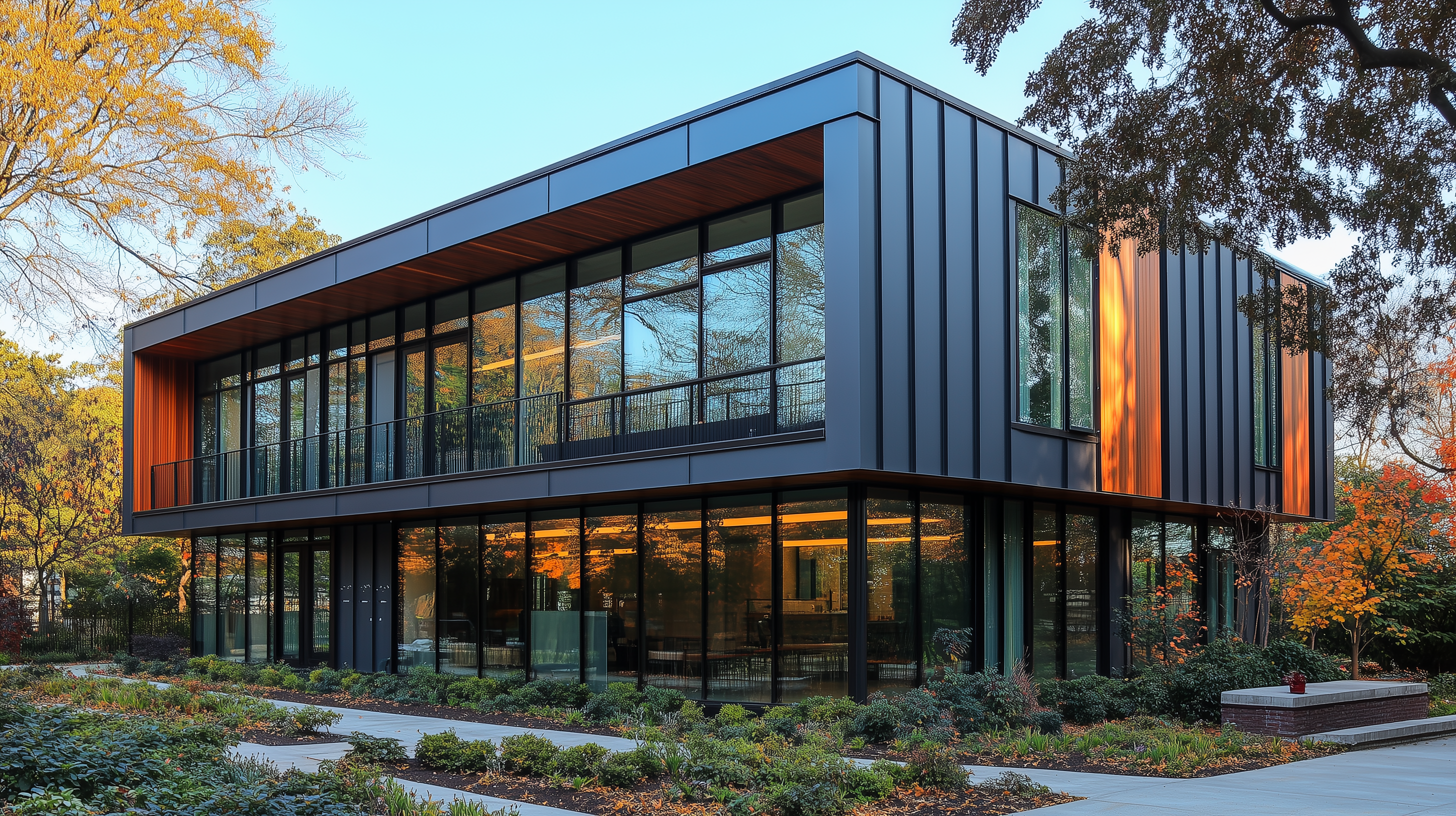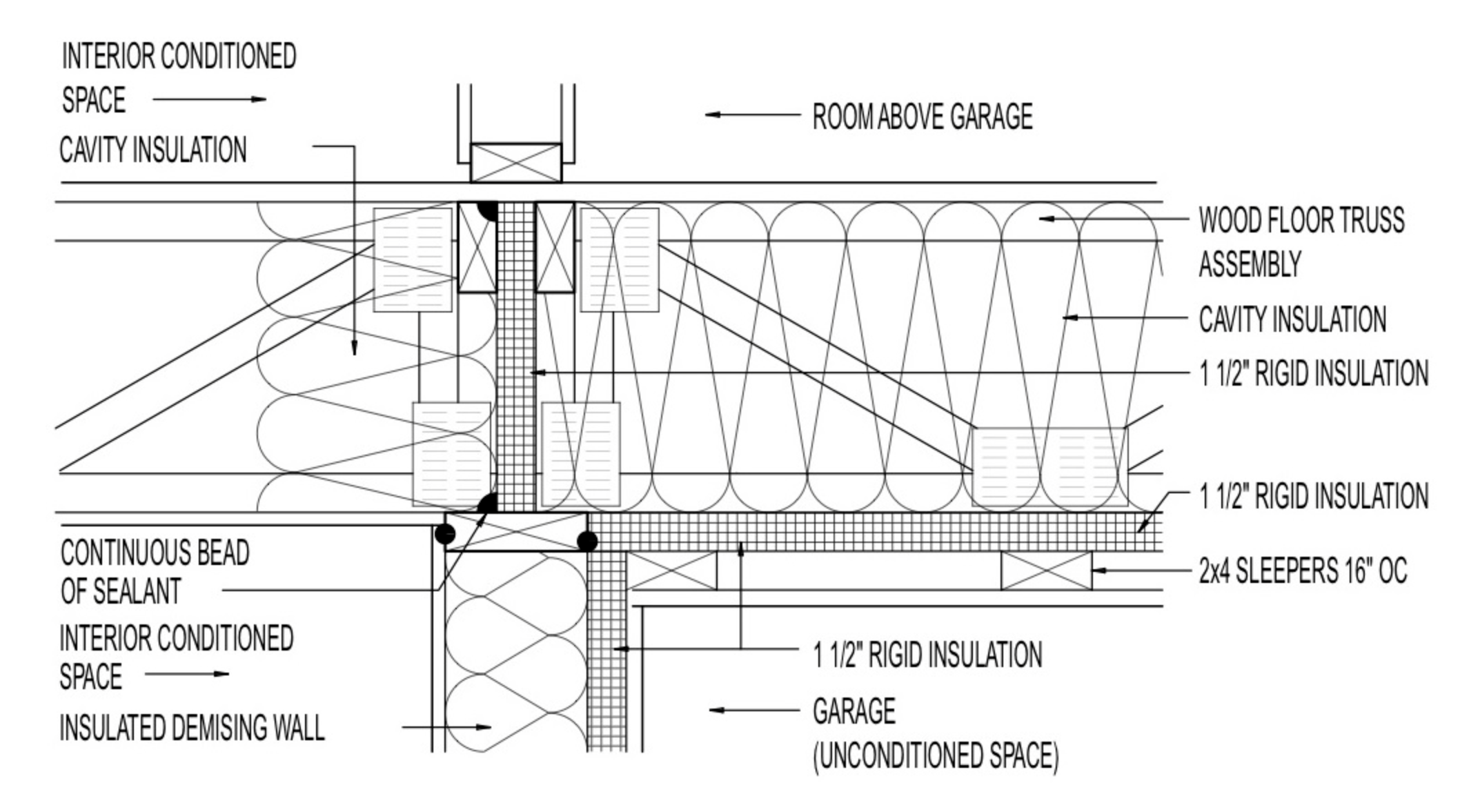Air Sealing and Insulating Common Walls in Multi-Family Buildings for Code Compliance
Common walls—also known as party walls, fire walls, or tenant separation walls—play a critical role in multi-family buildings. These walls provide necessary fire resistance and compartmentalization between units, but they also pose unique challenges for air sealing and insulation. This guide provides an overview of how to ensure code compliance when sealing and insulating common walls in multi-family buildings, offering critical information for builders, designers, and code officials.
What Are Common Walls, and Why Are They Important?
Common walls in multi-family structures serve as both fire barriers and sound insulators, designed to prevent the spread of fire between units and improve energy efficiency. They typically extend from the foundation to the roof and often require specific insulation and sealing methods to achieve a fire-resistance rating, reduce air leakage, and comply with building codes.
Key Functions of Common Walls:
- Fire Resistance: Common walls must meet fire-resistance standards, enabling the containment of fire within a unit without risking structural failure of adjacent units.
- Energy Efficiency: Air sealing and insulating these walls help reduce heat transfer and improve energy efficiency.
- Soundproofing: Insulation within common walls also serves to dampen noise transfer between units, enhancing occupant comfort.
Code Requirements for Common Walls in Multi-Family Buildings
To comply with energy and building codes, common walls in multi-family dwellings must meet fire and air-sealing standards. However, these requirements can vary depending on the code version, climate zone, and specific building characteristics.
Key Code Sections:
- Fire Resistance
- International Residential Code (IRC) R302.2: Common walls in multi-family buildings, such as townhouses, must have a fire-resistance rating (1-hour or 2-hour, depending on sprinkler systems).
- ASTM E119 or UL 263: These testing standards determine fire resistance, ensuring that common walls can withstand fire exposure from both sides.
- Air Sealing Requirements
- IECC and IRC, Section R402.4: Air leakage must be minimized for the entire building thermal envelope, including common walls.
- The Air Barrier and Insulation Installation Table within Section R402.4.1.1 outlines how air barriers should be installed and sealed at critical junctions, including the junctions of walls and foundations or ceilings.
- Compartmentalization for Energy Efficiency
- 2012 IECC: Requires compartmentalization to achieve air leakage rates of 3 ACH50, which helps control airflow between units. These standards are further supported by programs like LEED and ASHRAE standards, which also promote compartmentalization for improved energy efficiency.
Insulation Standards:
- R-Value Requirements
- Climate-specific R-values should be met to insulate common walls effectively. For instance, the New York Residential Energy Conservation Code mandates R-10 cavity insulation for common walls to enhance thermal performance and reduce heat loss between units.
Best Practices for Air Sealing and Insulating Common Walls
Proper air sealing and insulation techniques are critical to achieving compliance with both fire and energy codes. Following best practices can improve overall efficiency and occupant safety.
- Use Fire-Resistant Materials
- Seal gaps and penetrations in the common wall with materials that meet fire rating standards, such as caulk, fire-blocking foam, or fire-resistant gypsum board. This is crucial for maintaining the wall’s integrity during a fire.
- Apply Continuous Air Barrier
- Install a continuous air barrier along the entire common wall surface. This barrier must be airtight and meet fire resistance standards where necessary. Properly sealed junctions at the foundation, ceiling, and adjacent walls will prevent air transfer and enhance energy efficiency.
- Consider Full Insulation
- Although insulation of common walls isn’t required in all energy codes, fully insulating these walls provides benefits for soundproofing and thermal performance, especially in climates with significant temperature differences. Use high-performance insulation like mineral wool, which offers both soundproofing and fire resistance.
- Penetration Firestop Systems
Plan Review and Inspection Protocols for Common Walls
For a smooth plan review and inspection process, builders and code officials must ensure that common walls meet the necessary requirements. A thorough inspection at the rough-in phase can identify issues before they become costly to fix post-construction.
Plan Review Essentials:
- Detailed Construction Documentation
- Submit documents outlining fire-rated materials, air-sealing techniques, and insulation R-values as required. Section R103.2/N1101.5 of the IECC/IRC requires construction plans to detail fire-blocking and insulation methods to confirm code compliance.
- Fire-Resistance and Sealing Documentation
- Include manufacturer instructions and testing reports for fire-resistance-rated materials. UL and ASTM certifications for sealants and fire-stop systems should also be available in documentation.
Inspection Checklist:
- Verify Fire-Resistance Ratings: Ensure all fire-rated materials match those specified in construction documents and meet the standards outlined in IRC Section R302.
- Confirm Air Barrier Installation: Inspect the continuous air barrier at all junctions, including foundations, ceilings, and adjacent walls.
- Check Insulation Fit and Installation: Insulation should be properly installed without compression or gaps, aligning closely with the air barrier.
- Inspect Penetration Seals: Confirm that firestop systems are in place for all penetrations and that materials used comply with ASTM E814 or UL 1479 standards.
Benefits of Properly Sealed and Insulated Common Walls
- Enhanced Safety
- Sealed common walls slow the spread of fire and smoke, providing critical time for occupant evacuation and reducing fire damage.
- Improved Energy Efficiency
- By compartmentalizing units, common wall sealing reduces energy loss, leading to lower utility costs and enhanced HVAC performance.
- Occupant Comfort
- Effective sealing reduces noise transfer, minimizes drafts, and enhances indoor air quality by preventing the infiltration of pollutants from adjacent units.
Fireblocking Requirements for Common Walls
When it comes to multi-family dwellings, achieving effective fire resistance in common walls requires adherence to specific material standards for fireblocking, as outlined in IRC Section R302.11.1. Fireblocking helps compartmentalize units, reducing the risk of fire spread through concealed spaces, and plays a critical role in the structural integrity and safety of common walls.
Materials for Fireblocking in Common Walls
According to R302.11.1, fireblocking should be constructed from approved materials, which may include:
- Two-inch nominal lumber
- Double layers of 1-inch nominal lumber with offset joints
- Gypsum board (1/2 inch) or cement-based millboard (1/4 inch)
- Approved batts or blankets of mineral wool or glass fiber
- Cellulose insulation tested to ASTM E119 or UL 263 standards
Proper installation and retention of these materials are essential to maintain fire resistance in common walls and ensure that they can effectively block the passage of flames and hot gases.
Batts and Blankets of Mineral Wool or Glass Fiber
For walls with parallel or staggered studs, Section R302.11.1.1 allows the use of mineral or glass fiber batts for horizontal fireblocking. This approach provides flexibility in meeting fire blocking requirements, especially in multi-family structures where space constraints can impact material choices.
Air Leakage Control and Insulation Standards
Ensuring that the building thermal envelope, including common walls, is properly air-sealed is critical for energy efficiency. The 2015 IECC/IRC Section R402.4 mandates that common walls in multi-family buildings should be sealed to limit air infiltration. The following sections clarify installation methods to achieve effective air sealing:
- R402.4.1 Building Thermal Envelope
- Dissimilar materials used in the building envelope must be sealed in a way that allows for expansion and contraction. This is crucial for common walls, where structural movement could otherwise lead to gaps and air leakage.
- R402.4.1.1 Installation Requirements
- Components of the thermal envelope must be installed per the manufacturer’s instructions, with particular focus on creating a continuous air barrier, especially at junctions with foundations, top plates, and exterior walls.
- Air Barrier Installation Table (R402.4.1.1)
- This table provides standards for the installation of air barriers and insulation in areas like the junctions between common walls and adjacent construction elements, ensuring alignment with insulation to minimize thermal bridging and air leakage.
Best Practices for Installation in Common Walls
- Joints and Penetrations: Seal joints, penetrations, and transitions where common walls meet other building components, such as rim joists and ceiling junctions.
- Continuous Air Barrier: Use an approved combination of materials to create an unbroken air barrier across the wall assembly. This may include caulk, sealant, or a solid air barrier material.
Integrating these fireblocking and air leakage control standards ensures common walls in multi-family buildings are code-compliant, enhancing both safety and energy efficiency.
Conclusion
Air sealing and insulating common walls in multi-family buildings is essential for fire safety, energy efficiency, and occupant comfort. By following code requirements and best practices, builders and remodelers can ensure compliance and improve the building’s overall performance. Proper planning and inspection procedures are key to achieving effective and code-compliant solutions for common walls.
For immediate service or consultation, you may contact us at Allied Emergency Services, INC.
Contact Information:
- Phone: 1-800-792-0212
- Email: Info@AlliedEmergencyServices.com
- Location: Serving Illinois, Wisconsin, and Indiana with a focus on the greater Chicago area.
If you require immediate assistance or have specific questions, our human support is readily available to help you.
Disclaimer: This article is intended for informational purposes only. For professional advice, consult experts in the field.










